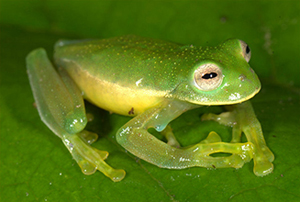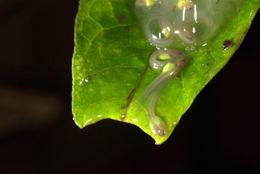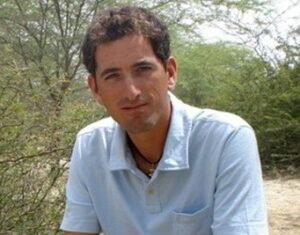 On June 4, 2012, Peru’s first trust fund for a conservation concession was officially created to protect and conserve the Los Amigos Conservation Concession (LACC) in the Madre de Dios region of the Peruvian Amazon. The International Conservation Fund of Canada (ICFC), established to support biodiversity conservation in the tropics, established the $1 million endowment so that the Amazon Conservation Association (ACA), and its partner Asociación para la Conservación de la Cuenca Amazónica (ACCA), are able to continue working to conserve and protect the region from unsustainable development, gold mining, hunting, and illegal timber harvesting.
On June 4, 2012, Peru’s first trust fund for a conservation concession was officially created to protect and conserve the Los Amigos Conservation Concession (LACC) in the Madre de Dios region of the Peruvian Amazon. The International Conservation Fund of Canada (ICFC), established to support biodiversity conservation in the tropics, established the $1 million endowment so that the Amazon Conservation Association (ACA), and its partner Asociación para la Conservación de la Cuenca Amazónica (ACCA), are able to continue working to conserve and protect the region from unsustainable development, gold mining, hunting, and illegal timber harvesting.
A conservation concession is an area of publicly owned land that is entrusted to a private entity for management in order to enforce policies conducive to biodiversity protection. Established by the Ministry of Agriculture in 2001, the LACC was the world’s first conservation concession, the success of which has led other countries to copy its design. Encompassing 360,000 acres of Amazonian rainforest, the concession has one of the highest levels of biodiversity in the area, with over 4,932 species currently registered. LACC is also home to the world-class Los Amigos Biological Station (known in Spanish as CICRA), one of the most active research stations in the Amazon basin.
Supporters gathered to inaugurate the establishment of the LACC Trust Fund at the June 4 event held in Lima. Rosario Acero,  general director of forestry and wildlife at Peru’s Ministry of Agriculture, spoke in appreciation of the fund, stating that “this is a great accomplishment for the Ministry of Agriculture to have a concession – in this case, Los Amigos – obtain a trust fund that provides a long-term horizon for the development of activities. This experience is a first for conservation concessions, and I believe it is a symbol of good things to come in the future.”
general director of forestry and wildlife at Peru’s Ministry of Agriculture, spoke in appreciation of the fund, stating that “this is a great accomplishment for the Ministry of Agriculture to have a concession – in this case, Los Amigos – obtain a trust fund that provides a long-term horizon for the development of activities. This experience is a first for conservation concessions, and I believe it is a symbol of good things to come in the future.”
Environment Minister Manuel Pulgar Vidal, also in attendance, expressed further support by commenting that civil society and conservation organizations “can now have the confidence to continue their work and fulfill their responsibilities, as shown today by the transformation of the LACC into an extremely successful example of a privately-run conservation area.”
 Anne Lambert, managing director of the ICFC, spoke of the important role the LACC plays in the research and conservation of the region, and about how institutional strengthening of conservation organizations is crucial for ensuring sustained environmental protection. The trust fund will provide the financial resources needed by ACA and ACCA to vigilantly and efficiently protect the LACC from illegal logging, mining, and other threats.
Anne Lambert, managing director of the ICFC, spoke of the important role the LACC plays in the research and conservation of the region, and about how institutional strengthening of conservation organizations is crucial for ensuring sustained environmental protection. The trust fund will provide the financial resources needed by ACA and ACCA to vigilantly and efficiently protect the LACC from illegal logging, mining, and other threats.
The fund’s establishment constitutes the first step in ACA’s commitment to the Clinton Global Initiative to provide long-term protection for the Los Amigos Conservation Concession through the creation of an endowment that is to eventually grow to $10 million. The interest generated by these funds is needed to finance the ongoing management and monitoring costs of the concession in perpetuity. (First photo by Frances Buerkens, others by Ronald Catpo)
 From August 19 to 29, the Amazon Conservation Association (ACA) hosted its second annual Birdathon to raise awareness about Peru’s incredible bird diversity and to help protect their habitat in and around Manu National Park. Led by Craig Thompson of the Wisconsin Bird Conservation Initiative, the group of conservationist birders traveled from the highlands to the lowlands, keeping a tally of the number of bird species they identified along the way.
From August 19 to 29, the Amazon Conservation Association (ACA) hosted its second annual Birdathon to raise awareness about Peru’s incredible bird diversity and to help protect their habitat in and around Manu National Park. Led by Craig Thompson of the Wisconsin Bird Conservation Initiative, the group of conservationist birders traveled from the highlands to the lowlands, keeping a tally of the number of bird species they identified along the way.
 On June 4, 2012, Peru’s first trust fund for a conservation concession was officially created to protect and conserve the
On June 4, 2012, Peru’s first trust fund for a conservation concession was officially created to protect and conserve the  general director of forestry and wildlife at Peru’s Ministry of Agriculture, spoke in appreciation of the fund, stating that “this is a great accomplishment for the Ministry of Agriculture to have a concession – in this case, Los Amigos – obtain a trust fund that provides a long-term horizon for the development of activities. This experience is a first for conservation concessions, and I believe it is a symbol of good things to come in the future.”
general director of forestry and wildlife at Peru’s Ministry of Agriculture, spoke in appreciation of the fund, stating that “this is a great accomplishment for the Ministry of Agriculture to have a concession – in this case, Los Amigos – obtain a trust fund that provides a long-term horizon for the development of activities. This experience is a first for conservation concessions, and I believe it is a symbol of good things to come in the future.” Anne Lambert, managing director of the ICFC, spoke of the important role the LACC plays in the research and conservation of the region, and about how institutional strengthening of conservation organizations is crucial for ensuring sustained environmental protection. The trust fund will provide the financial resources needed by ACA and ACCA to vigilantly and efficiently protect the LACC from illegal logging, mining, and other threats.
Anne Lambert, managing director of the ICFC, spoke of the important role the LACC plays in the research and conservation of the region, and about how institutional strengthening of conservation organizations is crucial for ensuring sustained environmental protection. The trust fund will provide the financial resources needed by ACA and ACCA to vigilantly and efficiently protect the LACC from illegal logging, mining, and other threats. The
The 
 The team was led by Wayqecha’s research coordinator Alessandro Catenazzi (pictured here) of San Francisco State University. Catenazzi has studied frog populations in and around the Wayqecha Biological Station for over a decade, documenting the decline in frog diversity and populations. A 40 percent loss of frog diversity over the last decade has been documented in the cloud forests around Wayqecha, with aquatic-breeding frogs experiencing the greatest decline. While following patterns of biodiversity loss worldwide, in this instance the decline of glass frogs is likely caused by the recent expansion of the chytrid fungus into the area.
The team was led by Wayqecha’s research coordinator Alessandro Catenazzi (pictured here) of San Francisco State University. Catenazzi has studied frog populations in and around the Wayqecha Biological Station for over a decade, documenting the decline in frog diversity and populations. A 40 percent loss of frog diversity over the last decade has been documented in the cloud forests around Wayqecha, with aquatic-breeding frogs experiencing the greatest decline. While following patterns of biodiversity loss worldwide, in this instance the decline of glass frogs is likely caused by the recent expansion of the chytrid fungus into the area.